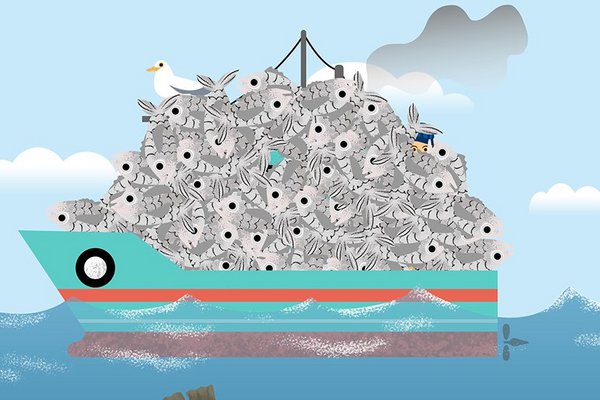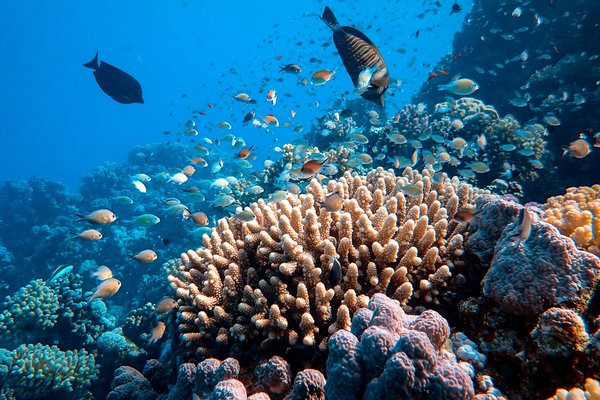We need more fish in the seas!

Over 80% of fish stocks in the Mediterranean and nearly 40% in the Atlantic are overexploited and climate change and pollution have a severe effect on marine biodiversity. We need ambitious measures for our seas!
Why do we need more fish in EU seas ?
In the European Union, fishing fleets have been managed by the Common Fisheries Policy (CFP) for almost 50 years. However, from the mid 1990s fish populations started to severely decline and trends in overfishing became alarming. Then, the CFP started progressively to integrate sustainability as an objective and, in 2013, to set targets to maintain fish populations at sustainable levels.
Despite some progress in the last decade, today most of the fisheries resources and marine ecosystems are in a bad condition.The depletion of fish stocks has not only a major impact on marine biodiversity, but also on the future of fishers and fisheries whose income depends on these resources.
There is an urgent need for more ambitious measures that would benefit EU society and nature as a whole.
The EU did not meet its targets
2020 was supposed to be the year of biodiversity at the international level. It was also supposed to be the year when good environmental status of EU seas was to be achieved and when all fish stocks were to be exploited at sustainable levels. These targets are part of the european legislation but EU action has been slowed down by short term interests and a lack of progress in the implementation process.
The situation of EU seas is grim
In the last decades, there were some improvements for fish populations in the Atlantic Ocean where the CFP is starting to bear fruit. Scientists estimate that around 38% of the stocks assessed are overexploited.
But the situation is very worrying in the Mediterranean Sea, where more than 80% of fish stocks are overexploited. Let us also be reminded that these figures are calculated species by species without taking into account marine ecosystems in their entirety, and only where the respective scientific assessments are available.
The European Court of Auditors confirmed this trend: EU action in the past decade was insufficient for the recovery of marine ecosystems and habitats. In general, levels of pollution are alarming and climate change has growing impacts on our oceans.
What can we do to protect fish populations and marine biodiversity?
The good news is that if we act now, we can change that future and have healthy oceans, according to some scientists. The EU should therefore put an end to overfishing.
This starts by fully implementing the 2013 reform of the CFP, by setting fishing quotas in line with sustainability criterias from all stocks, in all EU seas. We need to reinforce the scientific knowledge of our stocks, making sure enough resources are allocated to study all fish populations and the interactions between the different species and marine ecosystems they live in. This is key to implementing an ecosystemic approach to fisheries policy. We also need to limit the use of the most destructive fishing techniques, such as all gear that comes into contact with the seabed and so-called Fish Aggregating Devices, as it has been proven they have very negative consequences on the marine environment.
To actually protect marine biodiversity, the EU should set an effective network of Marine Protected Areas, covering 30% of EU waters with real management plans and a high level of protection for at least 10% of EU waters, meaning areas where all catches and economic activities are prohibited. According to the European Environmental Agency (EEA), today less than 1% of European Marine Protected Areas are fully protected and integrate fishing bans as part of their management measures. It is time for the EU to put an end to so-called “paper parks”. The 30% target is greenwashing if no measures are taken in these areas, such as bans of destructive fishing techniques or other economic activities
This year as part of the EU Green Deal, the European Commission adopted the 2030 EU Biodiversity Strategy: a comprehensive roadmap with ambitious targets such as 10% of highly protected areas. Ambitious targets set in the 2030 Biodiversity Strategy must be enshrined in EU legislation and fully implemented. Conservative forces are trying to turn this back.







![[Translate to English:] Zeichnung von einem Mann und einer Frau mit der Überschrift Bety y Jyri.](/fileadmin/_processed_/5/1/csm_230614_BetyJyri-Website_96cba086d2.jpg)